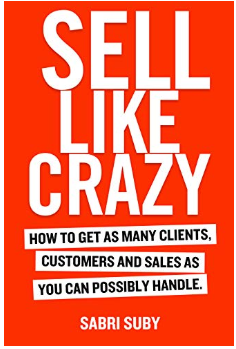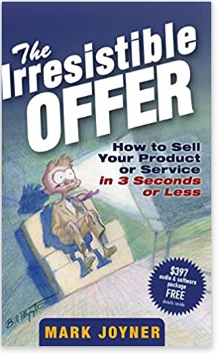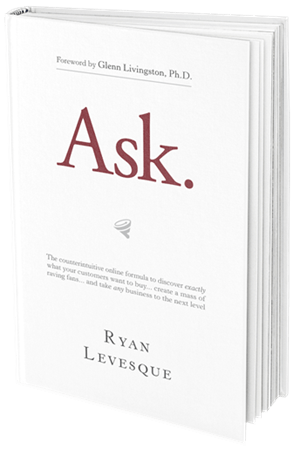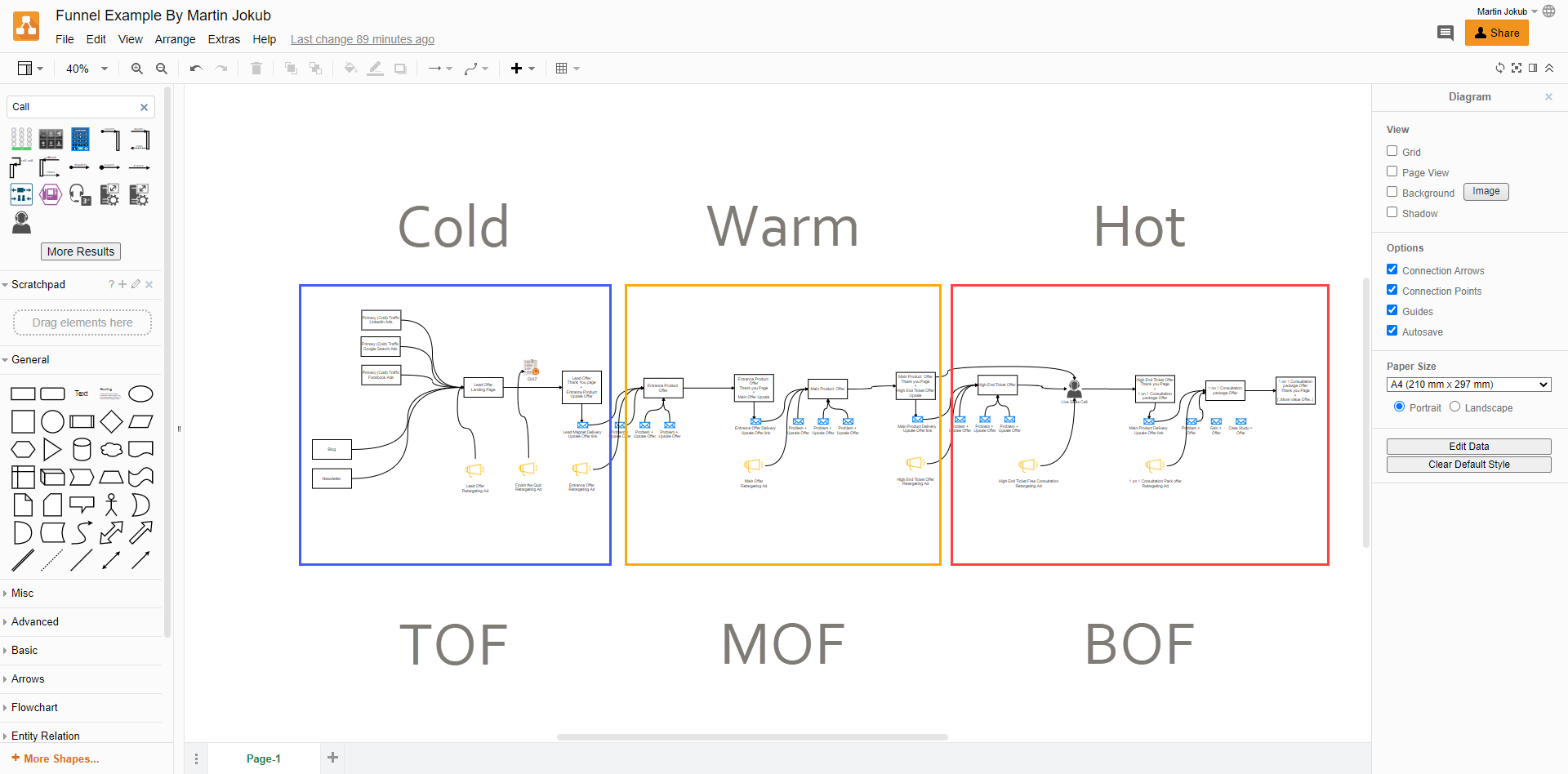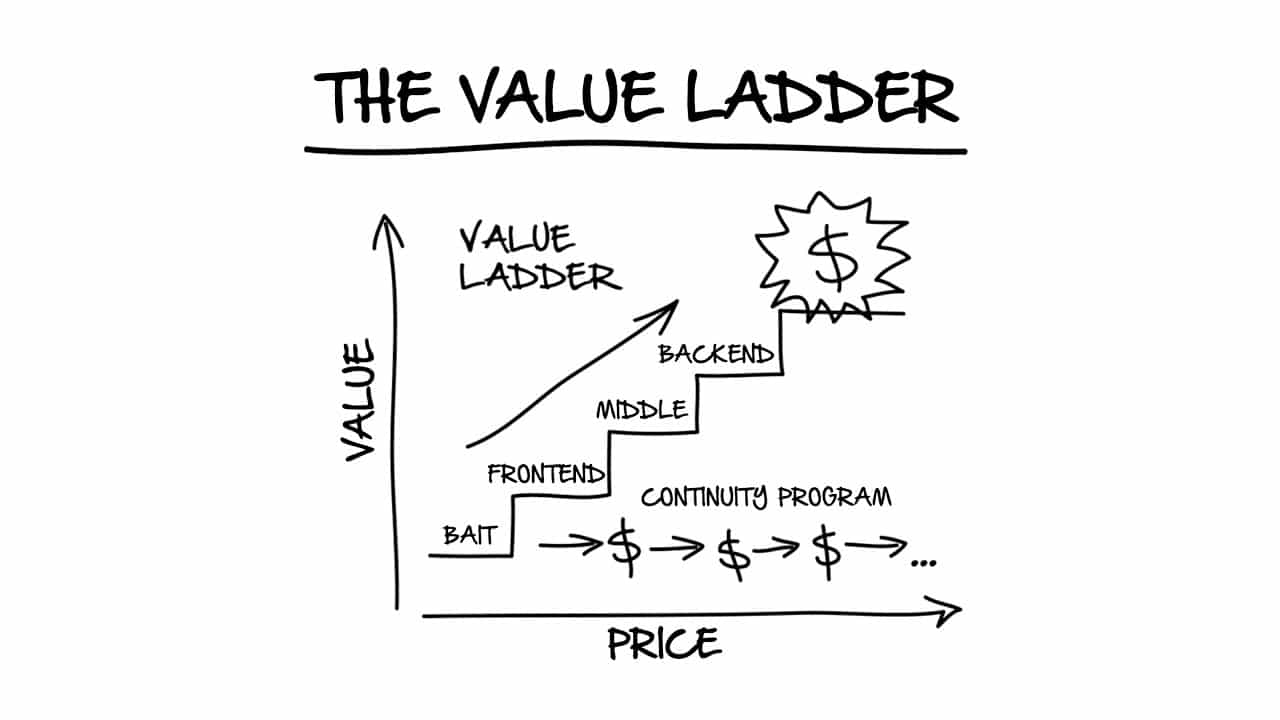Digital Marketing Strategy and Research
If you skip the fundamentals, your funnel won`t work
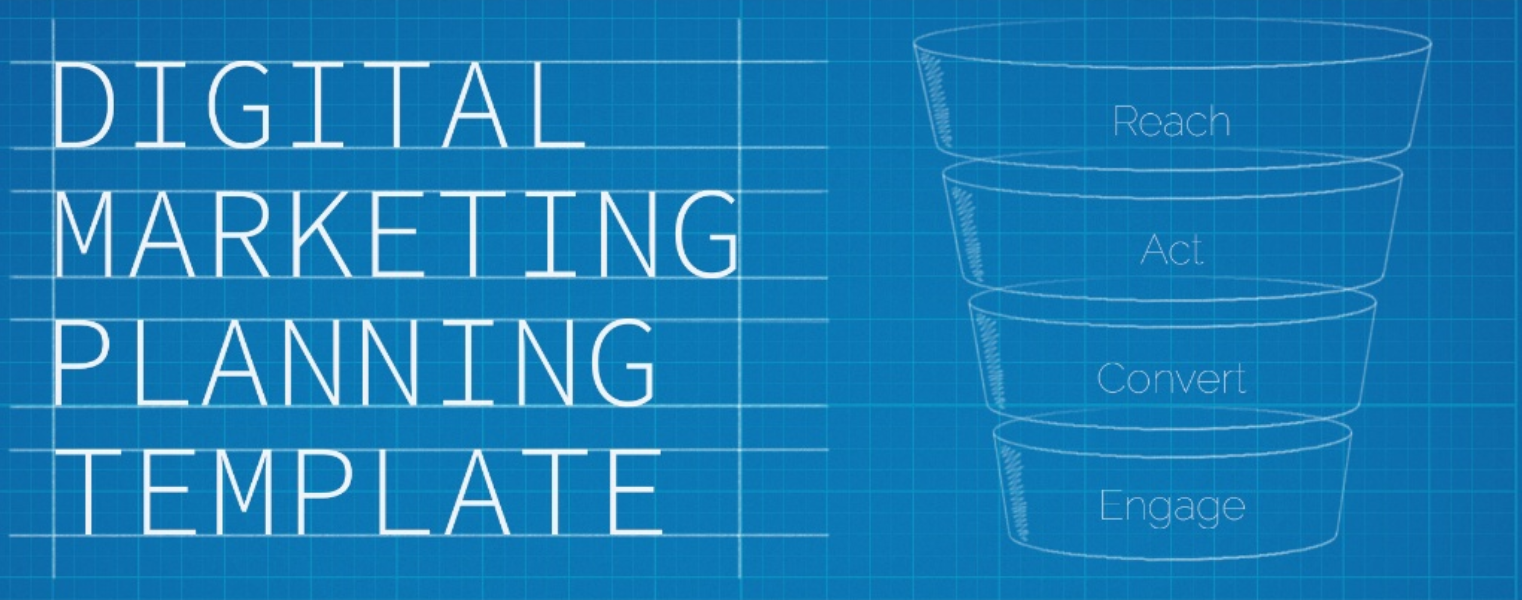
Strategy matters…
unless you like to go into battle blind and
without any ammunition
On the other hand, you don’t need to overdo it.
How can you have a long-term strategy that you can improve over time, but which also allows you to take actions that generate results every day?
Without a strategy, you will waste your time and money online. I have seen this hundreds of times.
Usually, I hear that self-justification:
"You know I just wanted to try this new (whatever it is) online thing, as I’ve heard that it works for others somehow."
If you plan to do something like that, better stop and buy yourself ice cream (or something that makes you happy)
In Digital Business, you should prepare first, do your homework, and only then try-test-optimize-and-repeat.
Are you entering a new market?
Then it's better to know the landscape where you want to go:
- who are the main market players today?
- What main rules are in action?
- What audience groups are in this market?
- Who's your competition or future partners?
How can you do a
Strategic Minimal Viable Marketing Test
without creating a product or service?
- How to draw and see your full digital strategy on one page?
- How to see every step of your customer's journey?
- How your Marketing Funnel looks and what potential results can it generate?
- How to personalize and deliver your messages at the right time, in the right channel, and in the right format for the right audiences?
- Who is your ideal customer/avatar/persona/buyer?
All these questions might look random for you, but without answers you will go blindly into the digital battlefield.
So, let's start from the beginning.
What should be included into digital marketing strategy?
Below you can see short Digital Marketing Strategy Plan:
What should you know about
digital marketing strategy and
why it is important?
First: Research
Is there anyone in the house?
If you enter a market where there is no behavior of buying things online, it means you will need to create and teach that market to have these behaviors and this will cost you a fortune!
There is nothing harder online (it's hard in the physical world too) than making people do new things that they are not used to doing. Because we are talking about changes in behavior, changes in their current lives, traditions, and beliefs.
You will need to go through the barriers of their current beliefs and make them, first of all, want to try your product and service, and, if you are lucky enough, get used to it and like it.
That's why it's important to do your "homework" before going into any market or niche. The online world, it's quite easy.
I will give an example: what do you do on your computer or mobile phone when you need some information or help but you don't know anything about it or where you can get it? I bet you thought about Google Search. The best part of it: Google lets you see all the trends and approximate Search volumes for different search phrases.
Second: Audience
First find who, then what
Usually, business owners think vice versa. First, they create a product and service and then try to adapt it to the market or certain groups. If you think about yourself as an innovator like Elon Musk or Steve Jobs, sure, you can try to create the vision and product first and make people love it. Just don`t forget to have veeeryyyy deeeeep pockets of cash, as for both of these innovators it wasn't a cheap ride.
If your cash pile is not so big, it's smarter to think from the customer perspective first. Who’s your perfect client? What problems does he/she have? How are they solving these problems right now? What alternatives exist today? How can you help them on this journey to get to the dream faster, cheaper, or maybe even with more pleasure? It really depends on the customer profile.
You can sell the same product in a thousand different ways. But the more you know about your customer, the better you can communicate how your solution will change their lives and help them get what they want.
Sabri Subi made a good list of things you need to know about your customer. Also, this book gives a lot of answers to other parts of the whole Digital Marketing Strategy.
Third: The story
...and thank God it’s not yours or even your product/service!
I already mentioned communication with your ideal client. But how to do it?
- Do YOU need to brag how good YOU or YOUR company is?
- Do YOU need to say YOUR story and how YOU got to this point?
- Do YOU need to prove YOURSELF – that YOU are capable of helping others?
- Do YOU need to be a millionaire, drive a Ferrari, or live in a big mansion to prove that whatever YOU do will help YOUR customer?
DO YOU SEE THE BIG PROBLEM IN ALL THESE QUESTIONS ABOVE?
YOU think too much about YOURSELF!
Let's try to change the perspective here. Let's rewrite all these questions with your CUSTOMER as the main hero. Let's call our hero Peter and let's imagine that Peter is the perfect customer for your business and let's see how Peter sees these questions you were asking yourself from his perspective.
- Does Peter care how others are bragging about how good they or their company are?
- Does Peter want to hear some stranger's story, without any context around how somebody got to this point?
- Does Peter care how somebody proves themself or that they are capable of helping others?
- Does Peter care that you are a millionaire, drive a fancy car, or live in a mansion and does he think that this will help him in any way?
You see, Peter doesn’t think about YOU! He cares about himself. That's what people do all the time.
And this is great news for you!
Because nobody cares about your story. What they care about is their story. The story, they are telling themselves in their heads. And the only thing they care about is that they can be supported and understood. They need someone who can feel them, tell them their story and help them to go from that story to the ideal place they wish to live in.
Your goal as a business owner/marketing manager: to understand that story and repeat that story to them. Be emphatic. Be supportive. Understand what he/she is going through and then move to the solution you have and maybe then you can start sharing your experience because only then it does it start to make sense.
Fourth: Offers ladder
Offer hierarchy
If you have one offer online and put all the money on one bet, you will lose the game.
Deliver value in smaller packages, let users feel that value, and make them want more.
Online Business games are all in the UPGRADES, not the main product.
It's important to know your ideal Customer Journey.
Then you can start delivering the right value at the right time. For example, if your users are not aware of the problem, you need to saturate the colors of it, get their attention and educate. If the user already knows the problem and they are looking for the solution, in this journey stage you can start delivering trials of your solution because they don`t know much about your way of solving it: free packages, free trials, discounts for the first weeks or even months can be good value. If your customer is already using your product, you need to know when they will need more and if you can deliver it without any distractions on time and with the best price and quantity, you will win.
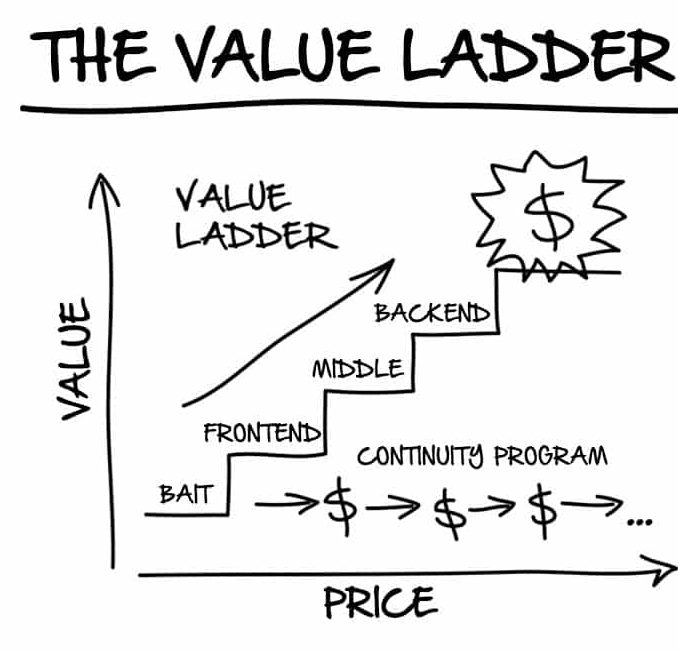
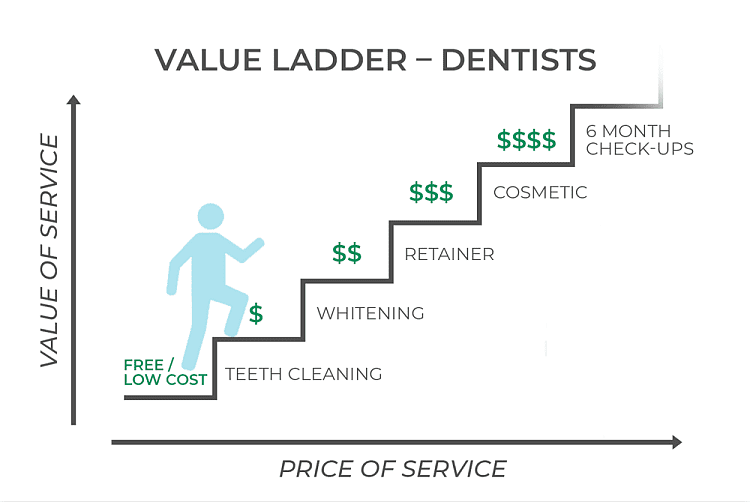
As you see, at the different awareness levels and different parts of a customer's journey, the same value is sold in different ways. I need to mention up-sales and down-sales that should be included in the process, too. That's where you start making real money online. The hardest part is to make your users take their Credit cards out, but once you do it and you deliver what you promised in the first place, you can start upgrading their choice. Again, depending on their personal situation and needs.
A lot about Value Ladders has been written in Russel Brunson’s book Dot Com Secrets. You can see some images from his book here.
Fifth: The Irresistible Offer
the Most Effective Offer
One thing is to say is: “Here is the product/service you provide – click here and buy it.” Another thing is to make people want your product/service now like nothing else. The art is convincing people that this offer is the best deal they can ever get and if they miss out now – that's it. They will miss the only opportunity.
FOMO (fear of missing out) is just one of the tactics marketers use online. You have probably seen those counters that give you just two minutes to make a decision.
The first book I read about irresistible offers (maybe in 2007) was The Irresistible Offer: How to Sell Your Product or Service in 3 Seconds or Less by Mark Joyner. I would call Mark Joyner my first online mentor. He was real, didn't try to steal my money, and delivered real value for the money I paid. I learned a lot of things from his books and courses. I even talked with Mark about going to New Zealand to work with him. But that is another story.
Later, I heard this term in a lot of workshops, courses, marketing books, etc. The idea here is really simple: how to make your online offer sell. What it should include. How to describe it. What information makes this offer unique?
Another online mentor I really like is Frank Kern and I participated in his last online class Let’s Get Some Sales (started in March / April 2020). I liked the simplicity if his method to create an irresistible offer:
- Answer what problem you are solving.
- Point out how exactly you are doing it.
- Say what is unique, cool and what the market does not know about your way of doing it.
Or another one:
- Here's what I have.
- Here is what it will do for you.
- Here is what you need to do now.
There are plenty of different methodologies you can use to create your offer, but those work great only if the second point on this list (knowing your customer) is correct. Here you can check some examples of irresistible offers.
But... when everyone in the market has an irresistible offer, having one is no longer enough!
If you are in competitive or crowded marketplaces you need to make it easy for your prospects to see why they should choose you over any other option in the market.
Your possible customers have a crazy high level of doubt and skepticism today. So it takes extreme, extraordinary measures to move lots of people to spend money with you.
And.... Constructing the right offer is only half the puzzle.
You also need to understand how best to frame and present your offer after it's constructed properly. You need to have the "right offer" and the "right presentation" of that offer.
Making the right offer and the right presentation means, your offer should:
- Prove why prospects should spend money with you. (What superpower will you give them: speed or time-saving, money-saving, no-energy-draining solution).
- Demonstrate why you're the superior choice in your market! (What are you doing differently and why it should matter? What's cool about your solution, etc).
- Make it a no-brainer for prospects to say YES to you! (Right price, money-back guarantee, valuable bonuses, etc).
Sixth: Traffic Channels and Ad Creatives
Previously, I talked about an offer that you will show to the client when he is ready to check it. But creating an offer does not mean that anyone will care about it at all. You will need to get people on board – targeted people. In the online world, it's called traffic.
I see that marketers like to over-complicate everything and introduce new traffic sources or channels with really fancy words and give them very specific names, so no one from the non-marketing industry (and even from it) can understand what it means, but at least it sounds very smart and futuristic. But in reality, a new form of advertising means there is a new channel where you can reach people and there are some forms of how you can deliver your message to these people through that channel. That's it!
Everything else about digital marketing is just fancy words saying the same things.
Sure, every channel has some unique features, every channel works for different groups of people and has different forms of message delivery (text, image, sound, video, or interactive built-in form) and, of course, there are plenty of tools to control and act on these channels. Each channel has different audience filtering systems, different limitations on forms, and length of messages.
But what all of it has in common is that they lead people to the digital property you own and this is what needs to matter to you.
Also, there are two types of traffic: Organic and Paid. Sometimes business owners think that organic traffic is free traffic so they put all their effort in one basket. But in reality, it's better to have both. Also, there is no such thing as free traffic. Even with organic traffic and viral effect, you need to earn. The paid traffic gives you an instant stream of users, so you can check how your offer is working, basically in minutes. If your offers do not work, change them If they work you will convert more organic visitors into clients later.
So in this step, you need to decide what channels you will choose for your traffic and what ad forms you will use for it. After that, you need to minimize your irresistible offer to ad forms that your chosen channels allow.
Seventh: Quiz
Not everyone is equal. Sort them out!
Ask people questions about themselves and you will be really surprised how different people are – even if their goals are the same. I think this method is described best by Ryan Levesque in his book Ask.
Try to join your lead forms with Quizzes and Questionnaires. This will reveal a lot of data about your possible customers and also give you the opportunity to adjust your communication and offers to different lead types and make your online business more successful.
If you talk to everyone (outbound marketing), you talk to no one. If you talk to a person who’s interested and you know at what journey stage he/she is, you can talk directly to that person (inbound marketing). Read here about Outbound vs Inbound marketing.
Maybe you were thinking “Why should I care about this at all?” Well, if you want to succeed online, it’s better to use all the advantages of the digital world. You might hear about Cambridge Analytica and the Facebook “data breach” (the problem here was not that Facebook leaked the data, but that users themselves gave the data). As in the Netflix documentary “The Great Hack,” it was mentioned that personal data surpassed oil in value. Data is the most valuable asset in the world.
Retargeting ads with customized AI-powered messaging technology, based on more than 5000 data points on every person, gave amazing results both in Donald Trump’s election campaign and in the UK’s Leave campaign. Data was used on a more sophisticated level to change beliefs and communicate with users a way that could change their beliefs and make them supporters of the movement.
I have given an extreme example of how user data can be used. But this is exactly what amazed me with all those retargeting technologies from 2012. To use that power, you need to learn about your prospects and the easiest way to do so is to ask them a few questions and sort them into groups where you can present your offer in a more persuasive way to each group. That's why it should matter for you. Better presentation of your offer leads to more sales.
Eighth: Map your strategy
Make your digital funnel
In the beginning, I asked a question: How can you draw and see your full digital strategy on one page?
Even in 2016, I was writing a 60-page marketing plan. I knew from the beginning that the people who needed to read it would not, even if they had paid for it. What has changed over recent years? I found out how to show the whole digital marketing strategy on one page. What was ironic here is that I had known it a decade before. In 2013, I released my personal workshop Smart Advertising, where I already had this concept in mind. But it all fit together when I met Samuel P. Cook in 2017. He showed me how he creates a map of digital properties in one easy-to-view document and how he links all different parts to different sources in one place.
Below you can see a real example for a digital educational product funnel made on a free online tool Diagrams.net (previously Draw.io). I prefer the paid tool Lucidchart, but basically you can draw your funnel even in a simple Paint program. It does not matter. What matters is that you need to understand it and be able to explain it to others – or even better that your funnel is self-explanatory.
Is the Funnel the main thing in the strategy? Can I copy it from someone else?
You see, that's the point. I can show you the funnel and you can copy it, but that funnel will not necessarily work for you.
This is the eighth out of eleven steps of the Digital Marketing Strategy. If you copy any plan from the end and skip the beginning, I can bet that in 99.99% of cases you won’t get the same result. Same here. The Funnel is nothing (it's just a drawing - the end result) without the context of why you build it this way. The Funnel is just the map of everything that you did until this point: the Digital Strategy Plan on one page.
Different business models can require different strategic parts and your funnel will look different. Plus, every time you run your funnel, you gather data on how it works and you improve the funnel every time. I even mark funnels with versions as software developers do with their software. The Funnel is a dynamic "creature" and the more your run tests on your funnel, the more data you get. Based on your data, you change your funnel. Your "Creature" grows over time and becomes a more effective sales machine.
What are the funnel parts? It's basically everything: all possible landing pages, all emails, ads, links to different systems, screenshots of your objects, relation between objects, URL addresses of the pages, names of objects, social media accounts, pages, ad accounts, etc. All objects you need to have to fully launch your digital strategy. When you see it - it's just easier to imagine what you need to do and make a priority list.
Ninth: Minimal Viable Funnel
Redraw your Minimal Viable Funnel (MVF)
The Funnel example above is a bit complex and I would never suggest you start from building the full funnel experience for your customers. It can look like a never-ending journey.
To avoid this big mistake (believe me, I have done it too many times) I suggest building your Minimal Viable Funnel (MVF). Build just the first part of the funnel. Find out if you collect leads first of all. Are people interested in the offer you have? If just two out of 100 people will jump on your lead magnet offer, you might have problems with a traffic source, ad communication, offer page communication, or even some technical problems. If you can't make your funnel convert at least at a 30% rate, you need to change some parts of the MVF and make it convert better. Because if the MVF does not work, nothing else in your strategy will matter.
Tenth: Simulation
Does your Funnel have a future? Simulate it!
It's very important to know if your funnel works in mathematical theory before building anything. I mean, if you make everything right and people start converting at the conversion rate you expect, will you make money with that funnel? Can it be self-sustaining? Maybe your expectations are too high and in reality, these conversion rates you were expecting will never happen. Even if they happen, maybe in the end your funnel still won’t be profitable. I can't stress enough how important this step is and what surprises me a lot is that almost no marketers (even amateurs) do this before execution. Try to ask your digital agency about digital strategy simulation and take a photo of their faces.
First, you need to know your theoretical goals for each funnel step – the conversion rate of the step. This means how many people will take an action you expect and how many of them will leave the page without taking that action. Then it will be easier to compare it with the real numbers that you get when you start driving traffic to your funnel. You will know exactly what numbers you need to reach to make that funnel work.
Below, you can see the funnel simulation software GERU. This software is made by another online mentor I had, who made the biggest impact on my professional career - John Reese.
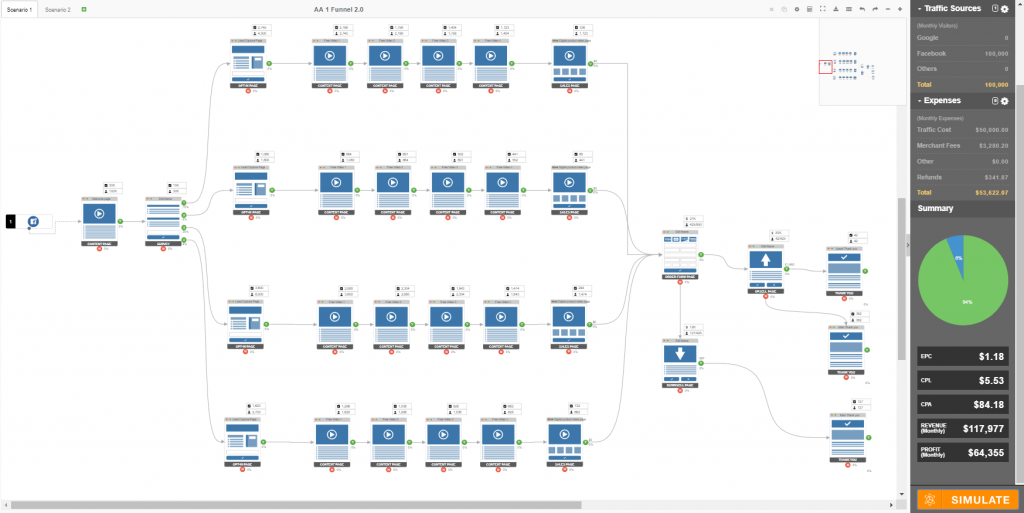
Eleventh: Key Performance Indicators (KPI's)
The last things you need to know before you begin to execute
Know your numbers. Know what KPI's you will track. Know how you will track them. Traditional software, for example, Google Analytics, is not really adapted for funnels and multichannel tracking. Yes, you can see it there, too, but you will need an advanced analytics account setup and even then it will be hard to see at a glance how good your funnel is performing at each step. Each ad network system usually provides different results as their calculation standards differ from each other. For example, Facebook Ads stats will differ from Google Analytics data. The difference will not be big (usually), but you will notice it. That's why it's important to set tracking standards at the beginning. A very interesting tool that helps to put all data from different sources into one place and see only important data on how each channel works is funnelytics.io You can see a short demo below.
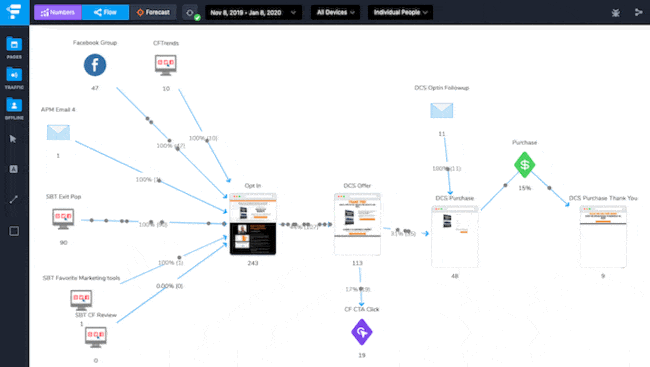
Another tool that does really similar things is marketplan.io

Huh, you just read decades of learning on one page...
Here's what next
Book a free 45-min Digital Strategy & Research Consultation
Sharing is caring
If you found the information on this page valuable, share it –
you can help others to discover new things too!
I’M A PASSIONATE DIGITAL BUSINESS ARCHITECT AND full stack digital marketer
Building Digital Products and Funnels since 2000
Digital Services I provide
AI Strategies & Solutions
Through AI Masters Agency I help to automate your business processes and integrate AI solutions.
For corporates, tech-savvy entrepreneurs, creators and experts who want to scale their business to the next level.
In my career so far, I’ve created more than 20 different personal brands from scratch. I’ve also helped hundreds of other companies with their brand identity, building landing pages that convert and working on final project development and delivery.
Let me show you how I work with concepts and branding, and how I turn them into functional products.
If you treat your website visitors equally and communicate with everybody the same way, in reality, you communicate with nobody.
You can have the best product on the market, huge marketing budgets, nice looking websites, and branding…. But nothing will matter if you communicate badly. Here's how I do it.
Personal Consultations
Does one size fit all? It doesn’t! You and I can think the same way, but we are different, unique, and consume information in different ways. Your business is unique. Every business is at a different stage of growth, has a different financial situation or ability to act quickly, different human resources, etc.
I adapt my expertise and knowledge to the personal needs of the client. Here is how.
Advertising Campaigns
Facebook, Google, Linkedin, Twitter, Instagram, Pinterest, Youtube, etc. These are just different digital channels. Display, search, video, voice, etc. advertising are just the form of communication in these ad channels. I spent almost a decade creating ad campaigns strategies and ad creative, as well as running and optimizing ad campaigns for various industries. See what I’ve learned.
I have been personally involved in three businesses where video production was one of the key elements. If I wasn’t a passionate digital marketer, I would be a film director/producer. I'm happy that video is one of the forms without which nobody can imagine the internet. I do project pre-production, directing, post-production and distribution.
Info Business Development
Ebooks, audiobooks, digital products, online courses, digital education classes, workshops, membership portals, podcasts, games, virtual reality applications, software, mobile apps, and any valuable information is just a form of digital info product. You can make a huge impact and earn money using any form of digital goods. I help top-level experts to help as many people as possible online.
Online Course Creation
A unique info product is a combination of the expert’s knowledge, market research, best-practice educational methodology, production quality, pricing, and platforms.
I help to build online courses, from course naming and video production to the final working product and even full digital marketing strategy on how the course will be delivered to your prospects.
I help companies and individuals create effective and long-term Digital Marketing Strategies. I do markets, competitors and digital product research.
I'm talking about a plan you can see on one page – not a hundred-page plan that nobody reads and that makes no sense from a practical aspect. Go deeper to find out how I do that.

